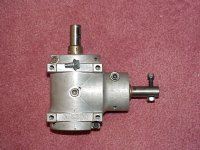Junkman
Super Member
Today, while assembling my new to me Kubota grass catcher (GCK60-BX) I learned of an inherent design flaw in the attachment of the Top Link Support Bracket (Pg.24 #4). I purchased this catcher used from a fellow TBN member on the West Coast and he dissembled it and shipped it to me. While putting the bolts(#7) into the Blower Drive Assembly(#3) I found that they weren't going in to the tapped holes easily. I removed the two bolts that I had just installed and found that the threads contained aluminum from the gear box (Pg.22#9) which they screwed into. This left me with no alternative but to remove the gear box and decide how to fix the problem. I had already come to the conclusion that it was going to be a helicoil repair. Upon getting the gear box out, I had to remove the bolts from the other gear box (#10) and found that those also showed signs of problems. I realized then that it was a case of the steel bolts going into the aluminum gear housings that is the problem. After examining the gear box attachment bolt holes, I found that they were tapped all the way to the bottom and that a longer bolt would make this repair a lot easier. I also went to the gear box manufacturers web site and learned that the holes are tapped 1 1/4" deep 5/16"x18 threads per inch. The top of the gear box mount is 3/16" thick and the top link support bracket is also 3/16" thick. The bolts that Kubota uses to attach all this is 1". That leaves only 1/4" of threads to hold this whole attachment together. The bolt is an overall 1" long and has 5/8" of threads. On Monday, I am going to purchase 8 bolts that have at least 1 1/4" of threads to replace these shorter bolts. I ran a tap down the tapped holes and if everything goes correctly, this will be a permanent repair. I also looked over the gear box and realize that I can flip the top for the bottom of the gear box housing and have 4 new holes to use if the damage was more severe, since the top and bottom are identical. The only thing that I would need to purchase to make this swap is a new expansion plug (Pg.28#8). When I reinstall all the parts, I intend to use never sieze on all the bolts to stop this corrosive action of dissimilar metals.
While researching the manufacturers site, I learned that the original factor fill of lubricants is 5 OZ. AGMA 5EP GEAR LUBRICANT. The Original Junk.....
While researching the manufacturers site, I learned that the original factor fill of lubricants is 5 OZ. AGMA 5EP GEAR LUBRICANT. The Original Junk.....

